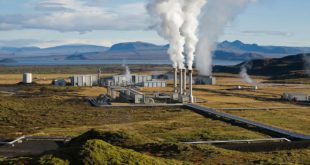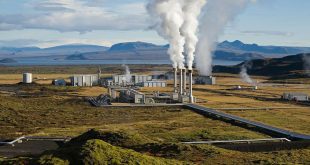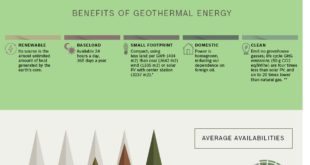Carbon Storage – and More
A novel process developed by a University professor with help from an IREE grant aims to produce clean, renewable energy while reducing greenhouse gases in the atmosphere.
A University of Minnesota earth sciences professor and a postdoctoral fellow in his work group have imagined a new process for generating electricity with a two-for-one climate benefit. Their “CO2 plume geothermal” (CPG) technology would draw heat from the Earth to produce electricity without producing carbon dioxide—while at the same time geologically sequestering CO2 that would otherwise be emitted into the air by traditional fossil-fuel-burning power plants, CO2 distilleries or other CO2 emitters.
Best of all, the process was born of a bright idea that puts existing technology to work. Says Martin Saar, a professor in the College of Science and Engineering, “Virtually all of the technology has already been tested.”
Saar’s geothermal process is on a fast track to production. An initial $600,000 grant from the Institute on the Environment’s Initiative for Renewable Energy and the Environment helped leverage a $1.5 million grant from the U.S. Department of Energy. The University has applied for international patents, and a start-up company is seeking capital to build a pilot plant.
“IREE was absolutely critical in making any of this happen,” says Saar. “It really got us going as an interdisciplinary team to investigate CO2 plume geothermal.”
The idea emerged four years ago as Saar and then–graduate student Jimmy Randolph were driving to a field site in northern Minnesota. They were batting about ideas for Randolph’s Ph.D. project on geothermal energy, and also, at the time, unrelated project on geologic CO2 sequestration—the process of pumping CO2 into deep, naturally permeable geologic formations or reservoirs below caprocks to reduce its concentration in the atmosphere and to slow global warming.
“Then the lightbulb went up in our heads,” says Saar. “We had a pretty good hunch in the car right then and there that this could be big.”
Here’s how it would work.
Their geothermal plant would pump CO2 down an injection well into a salty aquifer 2 to 5 kilometers below the surface, where tremendous pressure and temperatures of 70 to 200 degrees C would transform the gas first into a liquid and eventually into a “supercritical” state. “It has liquid-like density and gas-like viscosity,” says Saar. “It’s not really anything we’re familiar with in the everyday world, but most materials do this at sufficiently high pressures and temperatures.”
The supercritical CO2 would flow through porous bedrock more easily than water. Becoming far less dense than water as it warms, the CO2 would rise quickly through the brine-soaked bedrock and pool beneath a virtually impermeable caprock, such as shale. The now hot, low-density fluid would buoyantly rise through a production well without pumping. At the surface, the CO2 would drive a turbine— more efficiently and vigorously than water drives conventional steam-generation turbines. After cooling, the CO2 would be pumped back down the injection well, flowing in a closed, geothermal heat self-powered thermosyphon loop that would let none escape to the atmosphere. The geothermally generated power could help run the CO2 injection pumps that provide the initial CO2 captured from the CO2 emitter. In addition, revenue from any additional power generation could help defray the cost of carbon capture and sequestration.
Saar imagines his geothermal plant would piggyback on the carbon sequestration plants that many scientists, engineers and policy makers envision will sequester CO2 deep underground to help mitigate the effect of greenhouse gas production on climate. Indeed, dozens of CO2 sequestration plants are being planned or are already operating around the world. Moreover, oil companies routinely inject CO2 deep into oil- or other hydrocarbon-bearing formations to force out remaining hydrocarbons in so-called enhanced oil recovery operations. Suitable geology is fairly common, including the oil fields of the Williston Basin in North Dakota and Alberta Basin in Canada.
CO2 injection presents little risk of earthquakes or serious ground deformation. “The oil industry has been doing it for decades,” says Saar. “Adding geothermal to it should actually reduce seismic risks, because what happens when you tap the heat out of it, you reduce the pressure.”
The IREE grant helped Saar assemble a multidisciplinary team to study the feasibility of CO2 plume geothermal from the subsurface to the electrical grid. The project includes specialists from the College of Science and Engineering; the College of Food, Agricultural and Natural Resource Sciences; and the Humphrey School of Public Affairs. The team has applied for a National Science Foundation grant to carry the load once the IREE grant expires this year. And the start-up, Heat Mining Co. LLC, is pursuing venture capital to build a pilot plant within three to four years.
Such a short time line appears possible because the pieces of a CO2 plume geothermal plant already exist—from suitable geology, to well technology, to at least prototype CO2 turbines.
“That’s the beauty about it,” says Saar. “It’s one of those things where you don’t have a huge amount of risk in terms of technology because all the components are fairly well known.”
source
 Alternative Energy HQ solar power for homes, wind energy, and bio fuel issues
Alternative Energy HQ solar power for homes, wind energy, and bio fuel issues




